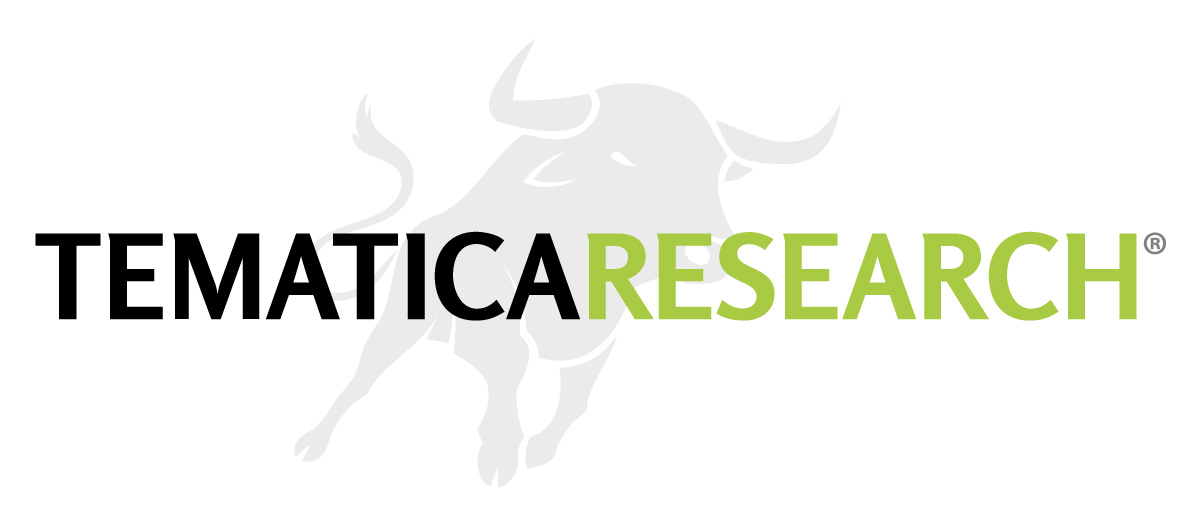Brookdale Senior Living: are its thematic tailwinds enough to earn a buy rating?
One of the great things about thematic investing is there is no shortage of confirming data points to be had in and our daily lives. For example, with our Connected Society investing theme, we see more people getting more boxes delivered by United Parcel Service (UPS) from Amazon (AMZN) and a several trips to the mall, should you be so inclined, will reveal which retailers are struggling and which are thriving. If you do that you’re also likely to see more people eating at the mall than actually shopping; perhaps a good number of them are simply show rooming in advance of buying from Amazon or a branded apparel company like Nike (NKE) or another that is actively embracing the direct to consumer (D2C) business model.
While it may not be polite to say, the reality is if you look around you will also notice that the domestic population is greying. More specifically, we as a people are living longer lives, and when coupled with the Baby Boomers reaching retirement age, it has a number of implications and ramifications that are a part of our Aging of the Population investing theme.
There are certainly the obvious issues related to this demographic shift, such as whether or not folks have enough saved and invested well enough to support themselves through increasingly longer life spans. And then, of course, there is the need of having access to the right healthcare to deal with any and all issues that one might face. That is something that shouldn’t be taken for granted, given the national shortage of nurses and health care professionals we are currently experiencing, and the reason why one AMN Healthcare Services (AMN) has been on the Tematica Investing Select List in the past.
But our Aging of the Population theme doesn’t stop there. Again, much like looking around at what people are doing at the mall, all one has to do is sit back and assess the day-to-day life of a typical octogenarian and see that we are seeing:
- A shift in demand for different types of housing as seniors give up on the homestead and move into easier to maintain condos and townhouses.
- An even greater focus on online retailers that will deliver purchases directly to the home, rather than having to go out and carry purchases from the store to the car and then into the home. Also driving this shift will be younger children making purchases for their aging parents and having them shipped directly to their home.
- Fountain of Youth goods and services will be in even higher demand as Baby Boomers will not let go of their youth easily.
- And finally, technology and services that will help maintain independence— we’re talking about robots, digital assistants, monitoring equipment and even things such as the autonomous car.
According to data published by the OECD in 2013, the U.S. expectancy was 78.7 years old with women living longer than men (81 years vs. 76 years). Cross-checking that with data from the Census Bureau that says the number of Americans ages 65 and older is projected to more than double from 46 million today to 75.5 million by 2030, according to the U.S. Census Bureau. Other data reveals the number of older American afflicted with and the 65-and-older age group’s share of the total population will rise to nearly 25% from 15%. According to United States Census data, individuals age 75 and older is projected to be the fastest growing age cohort over the next twenty years.
As people age, especially past the age of 75, it becomes challenging for individuals to care for themselves, and this is something I am encountering with my dad who turns 86 on Friday. Now let’s consider that roughly 6 million Americans will have Alzheimer’s by 2020, up from 4.7 million in 2010, and heading to 8.4 million by 2030 according to the National Institute of Health. Not an easy subject, but as investors, we are to remain somewhat cold-blooded if we are going to sniff out opportunities.
What all of this means is we are likely to see a groundswell in demand over the coming years for assisted living facilities to house and care for the aging domestic population.
Is Brookdale Senior Living Positioned to Ride this Thematic Tailwind?
One company that is positioned to benefit from this tailwind is Brookdale Senior Living (BKD), which is one of the largest players in the “Independent Living, Assisted Living and Memory Care” market with over 1,000 communities in 46 states.
The company’s revenue stream is broken down into fives segments:
- Retirement Centers (14% of 2017 revenue; 22% of 2017 operating profit) – are primarily designed for middle to upper-income seniors generally age 75 and older who desire an upscale residential environment providing the highest quality of service.
- Assisted Living (47%; 60%) – offer housing and 24-hour assistance with activities of daily living to mid-acuity frail and elderly residents.
- Continuing care retirement centers (10%; 8%) – are large communities that offer a variety of living arrangements and services to accommodate all levels of physical ability and health.
- Brookdale Ancillary Services (9%; 4%) – provides home health, hospice and outpatient therapy services, as well as education and wellness programs
- Management Services (20%; 6%) – various communities that are either owned by third parties.
- In looking at the above breakdown, we see the core business to focus on is Assisted Living as it generated the bulk of the company’s operating profit stream. This, of course, cements the company’s position within the framework of Tematica’s Aging of the Population theme. However, as with all investment strategies, success with a thematic approach ultimately comes down to the underlying principle of investing: determining if a stock is mispriced or undervalued relative to the business opportunities ahead as a result of the sea change presenting itself through a theme.
And so with Brookdale, we must determine whether it is a Tematica Contender — a company that we need to wait for the risk to reward tradeoff to reach more appetizing levels -— or is one for the Tematica Investing Select List to issue a Buy rating on now?
Changes afoot at Brookdale
During 2016 and 2017, both revenue and operating profit at Brookdale came under pressure given a variety of factors that included a more competitive industry landscape during which time Brookdale had an elevated number of new facility openings, which is expected to weigh on the company’s results throughout 2018. Also impacting profitability has been the growing number of state and local regulations for the assisted living sector as well as increasing employment costs.
With those stones on its back, throughout 2017, Brookdale surprised to the downside when reporting quarterly results, which led it to report an annual EPS loss of $3.41 per share for the year. As one might imagine this weighed heavily on the share price, which fell to a low near $6.85 in late February from a high near $19.50 roughly 23 months ago.
During this move lower in the share price, Brookdale the company was evaluating its strategic alternatives, which we all know means it was putting itself up on the block to be sold. On Feb. 22 of this year, the company rejected an all-cash $9 offer as the Board believed there was a greater value to be had for shareholders by running the company. Alongside that decision, there was a clearing of the management deck with the existing President & CEO as well as EVP and Chief Administrative Officer leaving, and CFO Cindy Baier being elevated to President and CEO from the CFO slot.
Usually, when we see a changing of the deck chairs like this, it likely means there will be more pain ahead before the underlying ship begins to change directions. To some extent, this is already reflected in 2018 expectations calling for falling revenue and continued bottomline losses.
Here’s the thing – those expectations were last updated about a month ago, which means the new management team hasn’t offered its own updated outlook. If the changing of the deck history holds, it likely means offering a guidance reset that includes just about everything short of the kitchen sink.
On top of it all, Brookdale has roughly $1.1 billion in long-term debt, capital and leasing obligations coming due this year. At the end of 2017, the company had no borrowings outstanding on its $400 million credit facility and $514 million in cash on its balance sheet. It would be shocking for the company to address its debt and lease obligations by wiping out its cash, which probably means the company will have to either refinance its debt, raise equity to repay the debt or a combination of the two. This could prove to be one of those overhangs that keeps a company’s shares under pressure until addressed. I’d point out that usually, transaction terms in situations like this are less than friendly.
The Bottomline on Brookdale Senior Living (BKD)
While I like the drivers of the underlying business, my recommendation is we sit on the sidelines with Brookdale until it addresses this balance sheet concern and begins to emerge from its new facility opening drag and digestion. Odds are we’ll be able to pick the shares up at lower levels.
This has me putting BKD shares on the Tematica Investing Contender List and we’ll revisit them for subscribers in the coming months.











 Since our last issue, the stock market continued to move higher on the news that President Trump will soon be sharing his tax overhaul plan and Fed Chairwoman’s Yellen’s congressional testimony yesterday. We review Yellen’s comments below in greater detail, but the point is the Fed, in aggregate, sees enough oomph in the economy to keep its stated goal of up to three rate increase this year in the mix. Candidly, we didn’t expect Yellen to deviate from the script given the next Fed meeting is still several weeks away, and far more data will be had ahead of it.
Since our last issue, the stock market continued to move higher on the news that President Trump will soon be sharing his tax overhaul plan and Fed Chairwoman’s Yellen’s congressional testimony yesterday. We review Yellen’s comments below in greater detail, but the point is the Fed, in aggregate, sees enough oomph in the economy to keep its stated goal of up to three rate increase this year in the mix. Candidly, we didn’t expect Yellen to deviate from the script given the next Fed meeting is still several weeks away, and far more data will be had ahead of it.